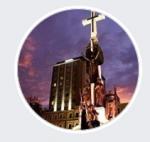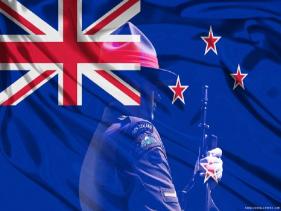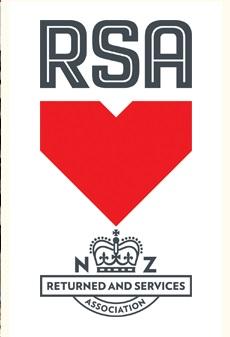

Our RSA Facilities
- Trenches Restaurant / Cafe
- Trenches Bar
- Poppy Club Bar
- Museum
- Function Centre
- Conference / Meeting Facilities
- Welfare and Support
- Poppy Department
- Club Sections
Christchurch Returned Services Association ( RSA )
Welcome to the Home of Christchurch Memorial Returned and Services Association
The Christchurch Memorial Returned and Services Association was originally formed in Christchurch as ‘The Returned Soldiers Club’ on 14 December 1915.
By the first wounded Veterans returning home from Gallipoli and the other battlefields of World War1. It is the first and oldest RSA in New Zealand and as such it is the parent of the RNZRSA movement in New Zealand.
The RSA includes Trenches Restaurant and Bar which is fully licensed and open to the public. You don't need to be a member to visit Trenches but membership of the RSA provides caluable discounts to patrons.
Anyone can join the Christchurch Memorial RSA and there is a discount for couples membership.
The all new Trenches Restaurant and Bar on the ground floor of the new Christchurch Memorial RSA building
The restaurant is open for breakfast, lunch and dinner menus and also has cafe style counter food and a full barista coffee service. The menus are all well designed and wholesome foods covering a wide variety of tastes.
Call us now on 03 379 9724 Visit Website or Click here to email Christchurch RSA
History of the Royal NZ RSA
The Beginings (1916-22) Last Post Video
On 15 July 1915 the ship Willochraenters Wellington harbour. A large crowd waits anxiously alongside ambulances for on board are the first wounded back from Gallipoli – the first returned soldiers of WWI. One that disembarks that day is Donald Simson who quickly realises the need for an association of returned soldiers and is instrumental in the formation of a number of local associations throughout the country.
Simson calls a national meeting that establishes the New Zealand Returned Soldiers’ Association on 28 April 1916.
By 1920 national membership has swollen to 57,000 out of a returned soldier population of 80,000.
NZRSA publishes a vibrant monthly journal Quick March.
The RSA quickly becomes an advocate for veterans as well as providing its own welfare services with the introduction of Poppy Day in 1922.
At the same time as subscribing to memorials for the dead the public supports building clubrooms for the living.
The RSA successfully presses for Anzac Day to be a public holiday in 1921 and develops a uniform service, based on a military funeral, to keep faith with dead comrades and their grieving families.
Survival (1920s-30s)
The successful rehabilitation of returned soldiers is a double-edged sword for the fledging RSA. With members no longer requiring its services national membership drops to below 7,000 by the mid 1920s.
Quick March ceases publication in 1923 and its successor, RSA Review, is a modest newsletter for many years.
The RSA is led for most of the period by Sir Andrew Russell who had commanded the New Zealand Division during WWI and believes that an officer’s duty to his men does not end with the cessation of hostilities.
The re-occurrence of latent war injuries and the impact of the Great Depression, as well as criticism of WWI from a fledging anti-war movement, see a revival of the RSA during the 1930s as returned soldiers look upon it as a valuable support network.
The rise of reunions, ‘smoko’ concerts and Tin Hat Clubs is testimony to the desire of returned soldiers to renew and celebrate their unique bonds of comradeship.
By the late 1930s the RSA membership is up to 30,000 and its recovery is exemplified by 1,400-strong RSA delegation to Sydney for Anzac Day 1938.
The RSA brings back from Sydney the Dawn Service – the ex-service ritual – and introduces it throughout New Zealand for Anzac Day 1939.
RSA at War (1939-45)
The outbreak of WWII sees the RSA mobilise to assist the government and the armed forces bring about victory. Many RSA members take a leading role in home defence while some again serve overseas.
RSAs and recently-formalised Women’s Sections assist with sending forces gift parcels (a tradition continued today for Defence Force personnel stationed overseas at Christmas time).
Dominion President Sir William Perry goes from overseeing the RSA’s war effort to that of the nation’s when he is appointed Minister of the Armed Forces and War Co-ordination in the War Cabinet in 1943.
The RSA opens its arms to a new generation of returning servicemen and women and battles to establish a world-class rehabilitation system.
Returning men and women respond by ‘joining up’ to the Association began by their fathers and uncles. By 1947 membership reaches a peak of 136,000 (92,000 of whom are returned from the recent war).
Golden Weather (1950s-60s)
During the 1950s and 1960s the RSA is at its zenith in terms of membership and activity.
There is an extensive building boom as RSAs either renovate or built new clubrooms to accommodate the significantly increased and more active membership.
The introduction of liquor licenses results in the development of the now famous club atmosphere of the ‘Razza’.
The RSA has considerable status and influence in terms of the size of its membership and their collective achievement in two world wars and also the fact that their leader in peacetime is former wartime commander Sir Howard Kippenberger.
The RSA is a cornerstone of postwar society.
Challenges (1960s-80s)
From its support for New Zealand’s involvement in the Vietnam War to its pro-alliance stance during the ANZUS Crisis of the 1980s the RSA is increasingly challenged by a growing portion of the postwar generation.
Anzac Day is either the scene of protests or largely ignored by the public.
Dominion President Sir Hamilton Mitchell is an antithesis to the anti-war movement.
It is also a period when the RSA loses the majority of its original WWI members.
These challenges force the RSA to consider its future and respond with the introduction of Service memberships as well as beginning the process of formalising club memberships.
Revival (1990s-present)
he renaissance of Anzac Day over the last two decades reflects New Zealanders growing interest in their military heritage and a shift in attention from the politics of war to remembering the human experience of war.
Veterans become the focus of a burgeoning Anzac Day celebration of national identity.
The RSA is itself in the midst of a transition and a revival.
At a time when WWII members are less able to take an active part, the baton is being taken up by younger Returned and Service members, as well as a rapidly growing number of the new Associate members, all part of a vibrant nationwide organisation.
John Campbell became the first post-WWII National President in 2004, followed by Robin Klitscher in 2007, and then Don McIver in 2010 – all Vietnam veterans.
We look forward to the future and new ways for one of the country’s largest voluntary organisations to continue to serve the nation.





